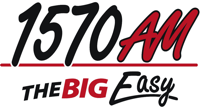WFRL
 | |
| City | Freeport, Illinois |
|---|---|
| Broadcast area | Stephenson County, Illinois |
| Branding | AM 1570 The Giant |
| Slogan | Genuine Country |
| Frequency | 1570 kHz |
| First air date | October 28, 1947[1] |
| Format | Classic country |
| Power |
5,000 watts day 500 watts night |
| Class | B |
| Facility ID | 63135 |
| Transmitter coordinates | 42°18′45″N 89°35′38″W / 42.31250°N 89.59389°WCoordinates: 42°18′45″N 89°35′38″W / 42.31250°N 89.59389°W |
| Callsign meaning | "What Freeport Really Likes"[2] |
| Affiliations | Westwood One News |
| Owner | Big Radio |
| Sister stations | WFPS, WEKZ (AM), WBGR-FM, WQLF, WGEZ, WBEL (AM), WWHG |
| Webcast | Listen Live |
| Website |
www |
WFRL (1570 AM; "The Giant") is a radio station licensed to Freeport, Illinois. WFRL airs a classic country format and is owned by Big Radio. Its studios and transmitter are at 834 North Tower Road, northeast of Freeport.
The station features local and Westwood One news, plus farm and local high school sports programming. WFRL operates 24 hours a day, but at one time was licensed as a daytime only station.
History
WFRL began broadcasting October 28, 1947, on 1570 kHz, running 1,000 during daytime hours only.[1][3] The station was licensed to Freeport Broadcasting Company, owned by Mr. and Mrs. Vincent S. Barker.[1][3][4] Barker built the station's transmitter in his basement during World War II.[4]
In 1959, the station was sold to Triad Television Corp for $275,000.[3][4][5] In 1964, the station's power was increased to 5,000 watts.[3] On April 11, 1965, its sister station, WFRL-FM, began broadcasting on 98.5.[4] WFRL-FM is now WXXQ.[4]
The station aired a MOR format in the early 1970s,[6] a news-talk format in the mid 1970s,[7] and a top 40 format in the late 1970s.[8] In 1977, the station was sold to Bradford-Ross Associates, along with WFRL-FM, for $475,000.[3][9] In 1980, the station was sold to Illinois Broadcasting, along with WXXQ, for $975,000.[3][10] By 1983, the station had adopted a country music format.[11] In 1983, the station was sold to a partnership of C.R. Griggs, James D. McQuality and Larry S. Ward.[12] In 1985, the station was sold to Freeport Radio Associates, along with WXXQ, for $1 million.[13]
By 1989, the station had adopted an adult contemporary format, and the station had begun nighttime operations, running 500 watts.[14] In 1991, the station was sold to Stateline Broadcasting, along with WXXQ, for $900,000.[15] In 1993, the station added talk programming.[16] In 1995, the station was sold to Connoisseur Communications, along with WXXQ, for $2.3 million.[17] By 1996, talk programming had replaced all music on the station.[18] In 1996, the station was sold to Eveningstar Media Group for $245,000.[19] The station temporarily simulcast 1440 WROK while the sale was pending.[18][20]
In 1998, the station adopted an adult standards format.[21] In 2005, the station was sold to Maverick Media.[22] In 2006, the station was sold to Green County Broadcasting, along with 92.1 WFPS, for $1,475,000.[23] In 2010, the station was an affiliate of the short lived "Hit Parade Radio" oldies network, which featured DJs Larry Lujack and Wink Martindale.[24][25] After the network's shutdown, WFRL retained the oldies format through local automation.[24] In 2017, WFRL switched to a classic country format.
References
- 1 2 3 "WFRL in Freeport Begins Operations on 1570 kc" (PDF). Broadcasting. November 10, 1947. Retrieved September 14, 2018.
- ↑ "WFRL Founder V. S. Barker Dies Thursday", Freeport Journal-Standard. July 25, 1975. p. 10.
- 1 2 3 4 5 6 History Cards for WFRL, fcc.gov. Retrieved September 14, 2018.
- 1 2 3 4 5 Ghrist, John R. (1996). Valley Voices: A Radio History. Crossroads Communications. p. 493-494.
- ↑ "Ownership Changes", Broadcasting. August 10, 1959. p. 93. Retrieved September 14, 2018.
- ↑ 1971 Broadcasting Yearbook, Broadcasting. 1971. p. B-63. Retrieved September 14, 2018.
- ↑ Broadcasting Yearbook 1977, Broadcasting. 1977. p. C-63. Retrieved September 14, 2018.
- ↑ Broadcasting Yearbook 1978, Broadcasting. 1978. p. C-65. Retrieved September 14, 2018.
- ↑ "Changing Hands", Broadcasting. February 7, 1977. p. 76. Retrieved September 14, 2018.
- ↑ "Changing Hands", Broadcasting. November 24, 1980. p. 60. Retrieved September 14, 2018.
- ↑ Broadcasting/Cablecasting Yearbook 1983, Broadcasting/Cablecasting. 1983. p. B-73. Retrieved September 14, 2018.
- ↑ "Ownership changes", Broadcasting. November 7, 1983. p. 83. Retrieved September 14, 2018.
- ↑ "Changing Hands", Broadcasting. February 18, 1985. p. 79-80. Retrieved September 14, 2018.
- ↑ Broadcasting & Cable Yearbook 1989, Broadcasting & Cable. 1989. p. B-92. Retrieved September 14, 2018.
- ↑ "Transactions", Radio & Records. September 6, 1991. p. 9. Retrieved September 14, 2018.
- ↑ "Format Changes", The M-Street Journal. Vol. 10, No. 21. May 26, 1993. p. 1. Retrieved September 15, 2018.
- ↑ "Transactions", Radio & Records. August 25, 1995. p. 6. Retrieved September 15, 2018.
- 1 2 "Format Changes", The M-Street Journal. Vol. 13, No. 21. May 22, 1996. p. 1. Retrieved September 15, 2018.
- ↑ "Transactions", Radio & Records. May 24, 1996. p. 8. Retrieved September 15, 2018.
- ↑ "Format Changes", The M-Street Journal. Vol. 13, No. 40. October 2, 1996. p. 1. Retrieved September 15, 2018.
- ↑ "Format Changes & Updates", The M-Street Journal. Vol. 15, No. 43. October 28, 1998. p. 1. Retrieved September 15, 2018.
- ↑ "Deal of the Week", Radio & Records. March 11, 2005. p. 9. Retrieved September 15, 2018.
- ↑ Asset Sale Agreement, fcc.gov. Retrieved September 15, 2018.
- 1 2 "Broadcasting News-June 2010", Upper Midwest Broadcasting. June 7, 2010. Retrieved September 15, 2018.
- ↑ "Hit Parade Radio's Parade Is Over", Chicagoland Radio and Media. June 4, 2010. Retrieved September 15, 2018.